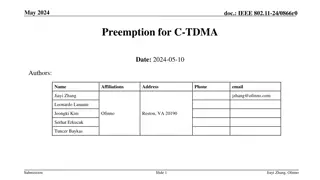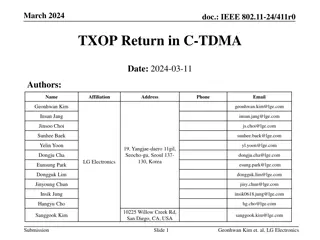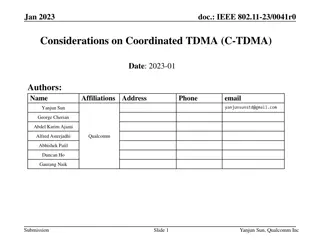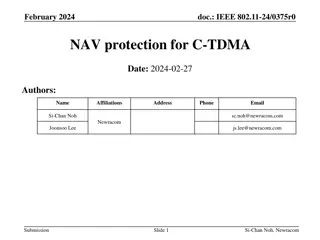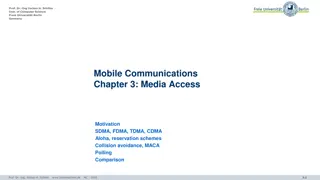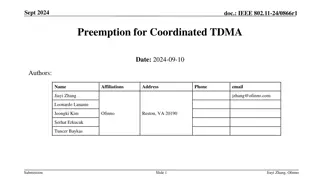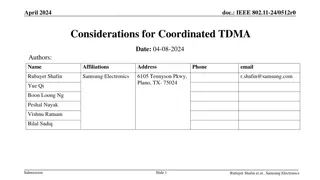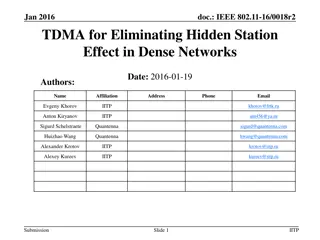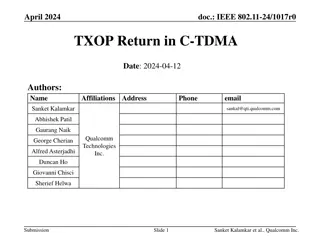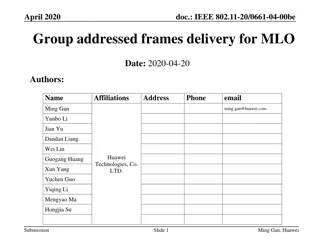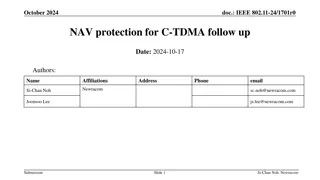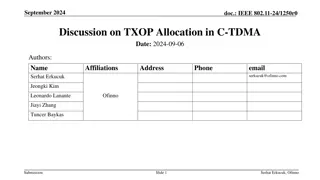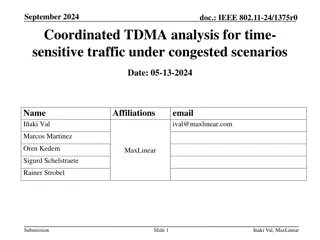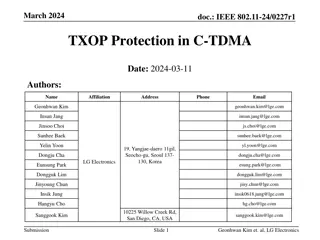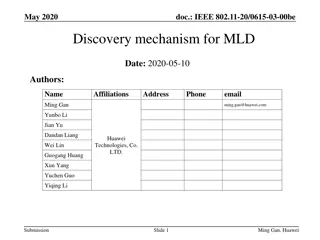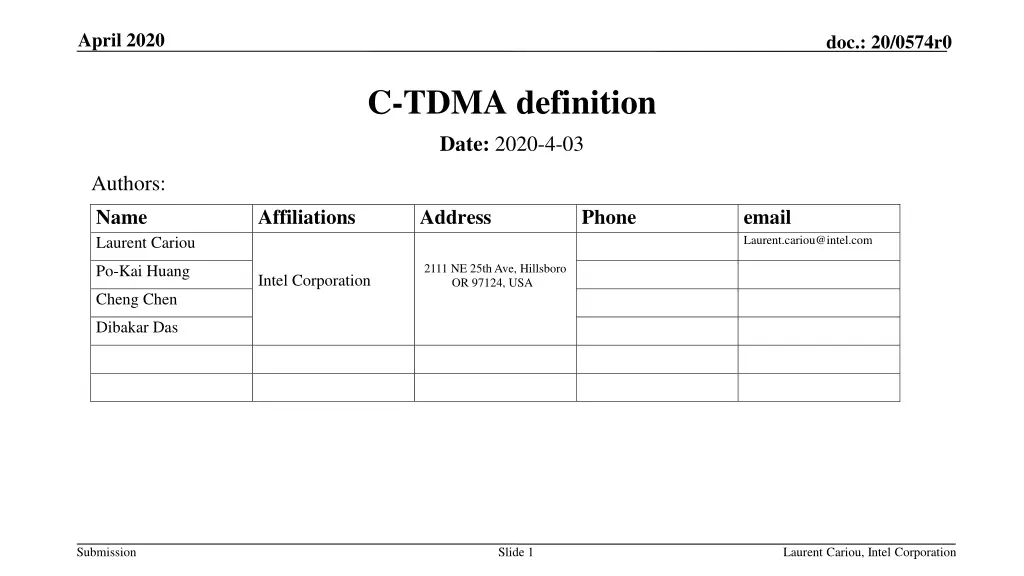
Definition of C-TDMA Mode
Explore the proposed C-TDMA mode for wireless communications, including the partitioning of TxOP into Time Periods and specific protocols for data transmission. Discover how C-TDMA simplifies the process by allocating time to shared APs without the need for orthogonality.
Download Presentation

Please find below an Image/Link to download the presentation.
The content on the website is provided AS IS for your information and personal use only. It may not be sold, licensed, or shared on other websites without obtaining consent from the author. If you encounter any issues during the download, it is possible that the publisher has removed the file from their server.
You are allowed to download the files provided on this website for personal or commercial use, subject to the condition that they are used lawfully. All files are the property of their respective owners.
The content on the website is provided AS IS for your information and personal use only. It may not be sold, licensed, or shared on other websites without obtaining consent from the author.
E N D
Presentation Transcript
April 2020 doc.: 20/0574r0 C-TDMA definition Date: 2020-4-03 Authors: Name Laurent Cariou Affiliations Intel Corporation Address Phone email Laurent.cariou@intel.com 2111 NE 25th Ave, Hillsboro OR 97124, USA Po-Kai Huang Cheng Chen Dibakar Das Submission Slide 1 Laurent Cariou, Intel Corporation
April 2020 doc.: 20/0574r0 Content Although everybody is using the term C-TDMA, we don t have such definition in the SFD yet. Submission Slide 2 Laurent Cariou, Intel Corporation
April 2020 doc.: 20/0574r0 C-TDMA C-OFDMA is based on the transmission from the shared APs of multiple PPDUs that are orthogonalized thanks to a trigger frame sent by the sharing AP Each PPDU carrying data is triggered by the shared AP Need for a protocol for DL, and if we want to, a specific protocol for UL, and a specific protocol for a mix of DL and UL We think C-TDMA should be designed with a simpler assumption as there is no need for orthogonality: Sharing AP just gives a time allocation to a shared AP, and during that time allocation the shared AP is free to do what it wants (transmits or solicits the PPDUs it wants, ) That means in this C-TDMA mode, the PPDUs carrying data are not triggered by the sharing AP, which only determines the start and end of the time allocation. Submission Slide 3 Laurent Cariou, Intel Corporation
April 2020 doc.: 20/0574r0 C-TDMA We then propose to define C-TDMA as the mode where: A part of the TxOP gained by a sharing AP is partitioned into Time Periods Each Time Period is given to one shared AP T F B A B A B A DL PPDU UL TB PPDU Time allocation given to shared AP 1 Within the Time Period allocated to one shared AP, one or multiple of the following items are possible: The shared AP can send one or multiple DL PPDU to its associated STA(s) It can send one or multiple trigger frame to solicit UL PPDUs from its associated STA(s) It can apply reverse direction protocol to allow for UL PPDU transmissions from its associated STA(s) M A P TF M A P TF Time allocation given to shared AP 1 Time allocation given to shared AP 2 TxOP gained by sharing AP Submission Slide 4 Laurent Cariou, Intel Corporation
April 2020 doc.: 20/0574r0 Straw polls Do you agree to add the following to the 802.11be SFD: The procedure for a sharing AP to share its TxOP time of an obtained TxOP with a shared AP, is called C-TDMA if each time period is only allocated to a single shared AP. During the time period allocated to a shared AP, the shared AP can do any PPDU transmissions, including sending DL PPDUs or soliciting UL PPDUs NOTE: a time period is a subset of the total TxOP time Submission Slide 5 Laurent Cariou, Intel Corporation



